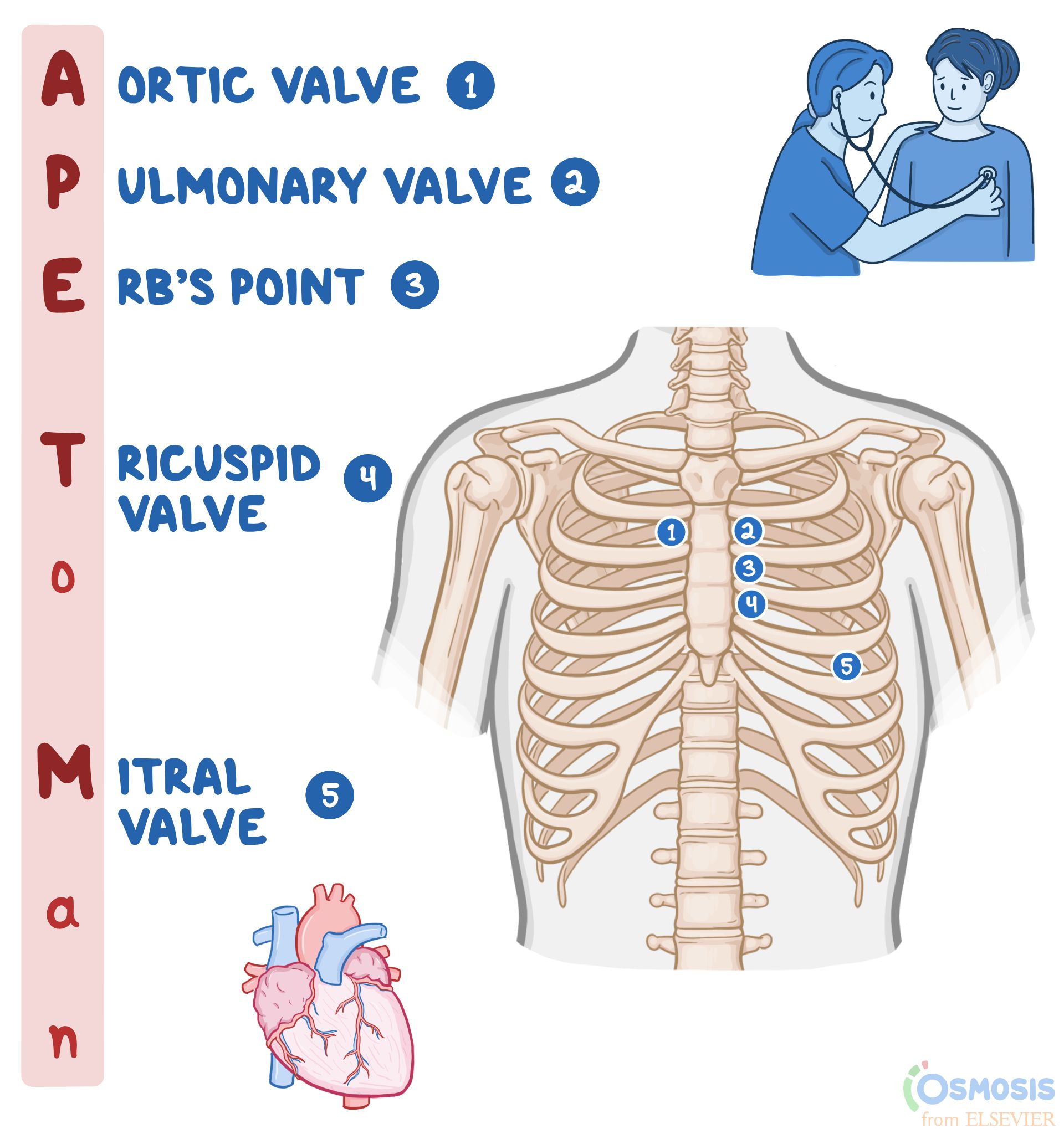The nurse is auscultating the lungs of a sleeping client and hears short, popping, crackling breath sounds that stop after a few breaths. The nurse recognizes that these breath sounds are:
Atelectatic crackles that do not have a pathologic cause.
Vesicular breath sounds.
Fine wheezes.
Fine crackles and may be a sign of pneumonia.
The Correct Answer is A
A. Atelectatic crackles that do not have a pathologic cause:
Atelectatic crackles are short, popping, crackling sounds heard during auscultation. They occur in individuals who are in a supine position and disappear after a few breaths. These crackles are not indicative of any pathological condition; they are common when the lungs are not fully aerated, especially when a person is lying down.
B. Vesicular breath sounds:
Vesicular breath sounds are normal lung sounds heard over the peripheral lung areas. They are soft, low-pitched, and continuous throughout inspiration and part of expiration. Vesicular breath sounds are the typical sounds heard during routine breathing and are not associated with crackling or popping noises.
C. Fine wheezes:
Wheezes are high-pitched whistling sounds heard during expiration. They occur due to narrowed airways and are commonly associated with conditions like asthma or bronchoconstriction. Fine wheezes suggest a partial obstruction in the smaller airways, causing turbulent airflow, leading to the characteristic sound.
D. Fine crackles and may be a sign of pneumonia:
Fine crackles are high-pitched, discontinuous, crackling sounds heard during inspiration. They can occur due to the sudden opening of small airways, and their presence may indicate fluid in the lungs or lung inflammation. Fine crackles are often associated with conditions such as pneumonia, heart failure, or interstitial lung diseases.
Nursing Test Bank
Naxlex Comprehensive Predictor Exams
Related Questions
Correct Answer is C
Explanation
A. Fifth intercostal space, left of the midclavicular line: This placement is used to auscultate the mitral valve, which is best heard at the apex of the heart. The mitral valve sounds are typically heard around the fifth intercostal space, midclavicular line.
B. Left lower sternal border: This placement is used to auscultate the tricuspid valve, which is best heard at the lower left sternal border.
C. Second left intercostal space: This is the correct placement for auscultating the pulmonic valve. The pulmonic valve sounds are best heard at the second left intercostal space, which is close to the upper left sternal border.
D. Second right intercostal space: This placement is used to auscultate the aortic valve, which is best heard at the second right intercostal space, close to the upper right sternal border.

Correct Answer is B
Explanation
A. Inform the client that his breast enlargement is benign, and normal for a man of his age:
This choice is not appropriate because while gynecomastia can be benign, it should not be assumed without a proper medical evaluation. Gynecomastia can have various causes, including hormonal imbalances or underlying medical conditions. It's crucial to identify the cause through a medical assessment.
B. Explain that this condition may be the result of hormonal changes, and recommend that he see his physician:
This is the correct choice. Gynecomastia can indeed be caused by hormonal changes, but it can also be due to medications, certain health conditions, or hormonal imbalances. Therefore, the nurse should recommend a medical evaluation to determine the underlying cause and appropriate management.
C. Recommend that he alter his diet to include fewer fats and more lean proteins:
This choice is not relevant to gynecomastia. Gynecomastia is not typically caused by dietary factors, so altering the diet would not be a suitable response to this situation.
D. Explain that gynecomastia in men is usually associated with prostate enlargement and recommend that he be thoroughly screened:
This choice is incorrect. Gynecomastia is not directly associated with prostate enlargement. While both conditions can occur in older men, they are distinct medical issues. Screening for prostate enlargement is not indicated based solely on the presence of gynecomastia. Proper evaluation and assessment of each condition are necessary.
Whether you are a student looking to ace your exams or a practicing nurse seeking to enhance your expertise , our nursing education contents will empower you with the confidence and competence to make a difference in the lives of patients and become a respected leader in the healthcare field.
Visit Naxlex, invest in your future and unlock endless possibilities with our unparalleled nursing education contents today
Report Wrong Answer on the Current Question
Do you disagree with the answer? If yes, what is your expected answer? Explain.
Kindly be descriptive with the issue you are facing.
